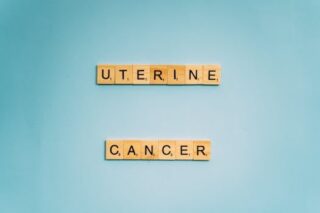
More Women's Health & Beauty Articles
Recognizing the Signs: My Journey with Uterine Cancer

My personal journey began with subtle changes that I didn’t recognize as significant at first. Learning how I knew I had uterine cancer was a process that involved listening to my body and understanding the signs it was giving me. When something felt off, I most importantly decided to seek professional advice, a step that proved pivotal in my eventual diagnosis.
Recognizing Symptoms: How I Knew I Had Uterine Cancer
One of the first symptoms I noticed was abnormal vaginal bleeding. Initially, I attributed it to stress or hormonal changes. However, when the bleeding became more frequent and unpredictable, I started to worry. Irregular bleeding is often cited in medical literature as one of the common early symptoms of uterine cancer.
Fatigue began to creep in, becoming more pronounced over time. I found myself consistently tired, even after a full night’s sleep. This was accompanied by localized pelvic pain that persisted, subtle yet concerning. These symptoms together were enough to convince me to see a healthcare professional.
Understanding the importance of evidence-based health approaches, you might explore how holistic methods complement traditional medicine for a broader perspective on health management.
Seeking Professional Help
After realizing that my symptoms were not resolving on their own, I scheduled an appointment with my healthcare provider. It’s vital to trust professional guidance, as they’re equipped with the tools and knowledge to determine the cause of health issues effectively.
My doctor recommended a series of diagnostic tests, beginning with a pelvic exam followed by an ultrasound. The ultrasound revealed some irregularities that warranted further investigation. A biopsy was then conducted to collect tissue samples for closer examination, ultimately leading to my diagnosis of uterine cancer.
The Emotional Impact
The diagnosis brought an emotional whirlwind. Fear and uncertainty were intense at first. However, confronting these emotions head-on was crucial. Open discussions with my healthcare team provided much-needed clarity and reassurance throughout the journey.
Support from family and friends played a significant role in navigating this period. Sharing my experience with others who had gone through similar challenges was incredibly comforting. They provided invaluable insights and encouragement that made a substantial difference in my outlook.
Treatment and Recovery
Treatment for uterine cancer often involves a combination of surgery, radiation therapy, and sometimes chemotherapy. In my case, after thorough discussions with my healthcare team, surgery was the recommended course of action.
Recovery from surgery took time and patience. It’s crucial to allow the body the rest and support it needs during this healing period. Engaging in gentle exercises, when approved by your doctor, can aid in recovery and enhance wellbeing.
To understand more about maintaining health and wellness during challenging times, accessing reliable resources can provide helpful information and guidance.
Embracing a New Normal
Post-recovery, embracing a new normal involves regular follow-up appointments and monitoring. This is essential to ensure that the cancer doesn’t return. It’s also a perfect opportunity to review lifestyle changes that could support overall health, such as a balanced diet and regular physical activity.
I learned the significance of being proactive about my health. Understanding our bodies and the signals they send can lead to early detection, which is often crucial for successful treatment. My journey highlighted the importance of awareness and taking immediate action when something feels amiss.
Reflecting on how I knew I had uterine cancer, I emphasize that listening to your body and seeking professional guidance without delay can make a meaningful difference in outcomes and overall health.
- Be attentive to unusual symptoms like abnormal bleeding and persistent pain.
- Seek professional medical advice promptly if symptoms arise.
- Understand the diagnostic process and treatment options.
- Emotional support and professional counseling can ease the journey.
- Regular monitoring and a healthy lifestyle are key post-recovery.
What are the early signs of uterine cancer?
The early signs often include abnormal vaginal bleeding, especially after menopause, pelvic pain, and unexpected weight loss. It’s important to consult a healthcare provider if these symptoms appear.
How is uterine cancer diagnosed?
Diagnosis commonly involves a pelvic exam, ultrasound, and biopsy to collect tissue samples from the uterus for analysis. These tests help determine the presence of cancer cells.
What treatment options are available for uterine cancer?
Treatment may include surgery, radiation therapy, and chemotherapy. The choice depends on the cancer stage, the patient’s overall health, and personal preferences. Discussing options with a healthcare provider is crucial for a tailored approach.
How can I support a loved one with uterine cancer?
Offer emotional support, accompany them to appointments, and encourage them to express their feelings. Being present and listening can be incredibly supportive. Encourage joining support groups for shared experiences and coping strategies.
What resources are available for more information on uterine health?
For credible information, you can refer to reputable health organizations and websites such as the American Cancer Society, the National Institutes of Health, or informative outlets like Wikipedia’s health page.
Other Articles You May Find of Interest...
- Recognizing the Signs: My Journey with Uterine Cancer
- What Does Brown Bleeding During Periods Mean and Why Does It Happen?
- Why Is My Menstruation Happening Twice in One Month?
- Is Uterine Cancer Causing Your Leg Pain? Discover the Connection and Find Relief
- Managing Tachycardia While Pregnant: What Expecting Mothers Need to Know
- What Causes Pimples on Breasts and How to Treat Them?
- Discover the Benefits of Pelvic Floor Therapy for Women’s Health














